#born 5th may 1915
Text
Easy Company Members Sorted Between Surviving and Not Surviving WWII:
Died During the War:
Company Commanders:
First Lieutenant Thomas Meehan III (July 8th, 1921 - June 6th, 1944)
Non-commissioned Officers:
Sergeant Warren Harold "Skip" Muck (January 31st, 1922 - January 10th, 1945)
Enlisted Men:
Corporal Donald B. "Hoob" Hoobler (June 28th, 1922 - January 3rd, 1945)
Private First Class Alex Mike Penkala (August 30th, 1924 - January 10th, 1945)
Survived the War:
Company Commanders:
Captain Herbert Maxwell Sobel (January 26th, 1912 - September 30th, 1987)
Major Richard Davis "Dick" Winters (January 21st, 1918 - January 2nd, 2011)
First Lieutenant Frederick Theodore "Moose" Heyliger (June 23rd, 1916 - November 3rd, 2001)
First Lieutenant Norman Staunton "Foxhole Norman" Dike Jr. (May 19th, 1918 - June 23rd, 1989)
Captain Ronald Charles Speirs (April 20th, 1920 - April 11th, 2007)
Junior Officers:
Captain Lewis Nixon (September 30th, 1918 - January 11th, 1995)
First Lieutenant Lynn Davis "Buck" Compton (December 31st, 1921 - February 25th, 2012)
First Lieutenant Edward David "Ed" Shames (June 13th, 1922 - December 3rd, 2021)
Second Lieutenant Robert Burnham "Bob" Brewer (January 31st, 1924 - December 5th, 1996)
Second Lieutenant Clifford Carwood "Lip" Lipton (January 30th, 1920 - December 16th, 2001)
Non-commissioned Officers:
Technical Sergeant Donald George "Don" Malarkey (July 30th, 1920 - September 30th, 2017)
Staff Sergeant William J. "Wild Bill" Guarnere Sr. (April 28th, 1923 - March 8th, 2014)
Staff Sergeant Herman "Hank, Hack" Hanson (January 3rd, 1918 - May 15th, 1971)
Staff Sergeant Denver "Bull" Randleman (November 20th, 1920 - June 26th, 2003)
Staff Sergeant Darrell Cecil "Shifty" Powers (March 13th, 1923 - June 17th, 2009)
Staff Sergeant John W. "Johnny" Martin (December 8th, 1921 - December 31st, 2012)
Staff Sergeant Floyd "Tab" Talbert (August 26th, 1923 - October 10th, 1982)
Staff Sergeant Charles E. "Chuck" Grant (March 1922 - October 12th, 1982)
Staff Sergeant Joseph John "Joe" Toye (March 14th, 1919 - September 3rd, 1995)
Sergeant Robert Emory "Popeye" Wynn Jr. (July 10th, 1921 - March 18th, 2000)
Sergeant James H. "Moe" Alley (July 20th, 1922 - March 14th, 2008)
Sergeant Wayne "Skinny" Sisk (March 4th, 1922 - July 13th, 1999)
Corporal Walter Scott "Smokey" Gordon Jr. (April 15th, 1920 - April 19th, 1997)
Enlisted Men:
Technician Fourth Grade George Luz (June 17th, 1921 - October 15th, 1998)
Technician Fourth Grade Eugene Gilbert "Doc" Roe Sr. (October 17th, 1922 - December 30th, 1998)
Technician Fifth Grade Joseph David "Joe" Liebgott (May 17th, 1915 - June 28th, 1992)
Private First Class Edward James "Babe" Heffron (May 16th, 1923 - December 1st, 2013)
Private First Class Edward Joseph "Tip" Tipper (August 3rd, 1921 - February 1st, 2017)
Private First Class David Kenyon Webster (June 2nd, 1922 - September 9th, 1961)
*This is not all of Easy Co. just some of the more recognizable names. If I missed anyone that you would like to see listed please message me and I would be glad to add him.
**I was also thinking about adding more info to this list and/or making a separate post with additional details like awards/medals, how and where they were wounded (if at all), and maybe some personal details like where they were born/died, their family (parents, siblings, spouse, children), what they did after the war (if they survived) stuff like that (though that might be a separate list idk yet). I would love to hear your opinion and if you'd like to see something like this. Basically just one large masterpost! Message me and tell me your thoughts!!!! I'm open to ideas!
#I did a thing#BoB#band of brothers#Easy Company#Easy Co#Skip Muck#Alex Penkala#Donald Hoobler#Sobel#Dick Winters#Moose Heyliger#Norman Dike#Ronald Speirs#Lewis Nixon#Buck Compton#Carwood Lipton#Bill Guarnere#Don Malarkey#Babe Heffron#Shifty Powers#Floyd Talbert#Joe Liebgott#George Luz#Eugene Roe#Joe Toye#David Webster#Skinny Sisk
28 notes
·
View notes
Text


On April 15th 1877, Sir David Ross, the Scottish moral philosopher and eminent Aristotelian scholar, was born in Thurso.
The third of four sons of John Ross and his wife Julia Keith, he spent the first six years of his life in India where his father served as Principal of the Maharaja’s College in Travancore. He returned to Scotland to receive his education at the Royal High School in Edinburgh, eventually taking a first-class honours degree in Classics from the University of Edinburgh in 1895. Ross subsequently attended to Balliol College, Oxford, obtaining first-class honours in classical honour moderations in 1898 and Literae Humaniores in 1900.
Ross’s career was not entirely academic; indeed, he had an ability to juggle academic life with a whole host of other esteemed responsibilities. In 1915 he began a career in the army, where he was soon promoted to the rank of major.
On the academic front, Ross was made fellow of the British Academy (FBA) in 1927, serving as its president between 1936 and 1940, and, throughout his career, received numerous honorary degrees from a number of respected establishments across the British Isles and Europe.
It is his academia that Ross is best known, he was Professor of Moral Philosophy, Provost of Oriel College, Oxford , Vice-Chancellor of the University of Oxford from 1941 to 1944 and Pro-Vice-Chancellor. He was president of the Aristotelian Society from 1939 to 1940.
Many believe that Ross’s work in the translation and interpretation of the works of Aristotle is his most valuable contribution to philosophy. However, his main writings in moral philosophy are of lasting if not equal value. His The Right and the Good is said to be one of the most important works of moral philosophy published in the twentieth century.
Ross also sat on many panels during the twentieth century, probably the most important was during WW II in determining conscientious objectors.
He died in Oxford on 5th May 1971 aged 84.
If philosophy is your thing you can find much more on Ross here https://iep.utm.edu/ross-wd/
7 notes
·
View notes
Text
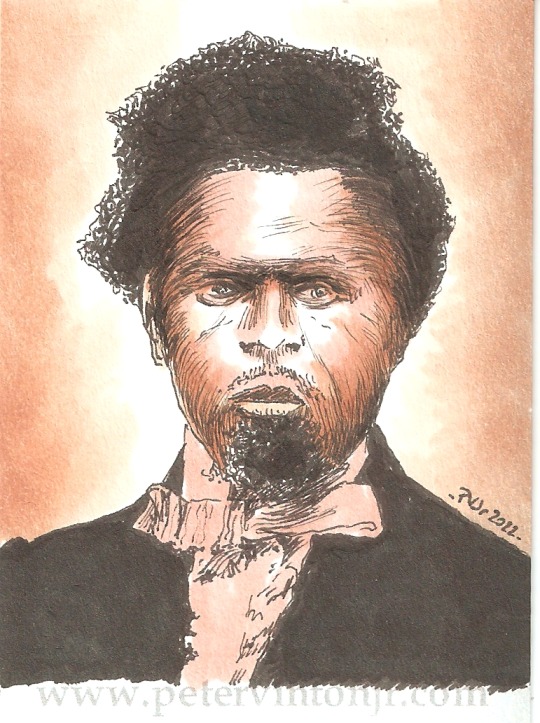
Lesson #107
"Good morning, sir! I've brought you some of the old United States guns, sir!"
In another "why on earth haven't they made a movie out of this person's life yet?" entry, we examine the fascinating tale of Robert Smalls. Born enslaved on a plantation in 1839 Beaufort, South Carolina, Smalls's childhood was, as one might expect, a never-ending horror show --the region was still grappling with the aftermath of Denmark Vesey's (planned) slave uprising, and local laws had decidedly amped up the oppression and the cruelty. At the age of 12 Smalls's owner sent him to Charleston to work as a ship-rigger and sailor. At the time all earnings went to the owner but Smalls managed to negotiate being able to keep 85% of the earnings by the time he was 18 --his plan ultimately being to buy his wife's and daughter's freedom. During these years he learned everything there was to learn about seamanship and by the time the Civil War kicked off, Smalls found himself serving as a deckhand about the sidewheel steamer Planter, a supply ship tasked with delivering armaments to various Confederate forts, including the now-infamous Fort Sumter.
On May 13, 1862 at 2:30 a.m., Smalls changed the narrative a little.
While the Planter was berthed in Charleston and all of her white crew (including its officers) were ashore, Smalls snuck his wife and children aboard her, and, along with twelve other secretly-recruited slaves from the city, commandeered the vessel and sailed her right past 5 other Confederate ships and other heavily-armed shore emplacements and forts --Smalls having mastered the coded whistle signals necessary to bluff his way past. The Planter then approached the Union blockade and raised the white flag to hail a Union clipper ship, the Onward. The Planter's entire store of munitions, plans, charts, and codebooks were turned over to U.S. Naval intelligence, and the ship itself became a Union warship. Smalls quickly gained notoriety in the Union's cause and drew the attention of President Lincoln, which almost certainly influenced his decision to permit Black soldiers to enlist in the Union Army.
There is of course a great deal more to the story --not the least of which includes Smalls's commissioning as an actual U.S. Navy officer and formal instatement as the Planter's actual Captain. He also piloted the Skipper, the Isaac Smith, and the ironclad Keokuk. He supported Sherman's March to the Sea and was present for the Union flag-raising ceremony at Fort Sumter in April 1865. His postwar story is equally compelling --including his purchase of his former owner's plantation house in Beaufort, and the founding of a school for Black children. He lent support to the Freedmen's Bureau, started and published a Black-owned newspaper, the Beaufort Southern Standard , and then --perhaps most improbably of all-- in 1874 ran for the U.S. House of Representatives, won, and served in Congress a total of five terms (first in South Carolina's 5th District, then after gerrymandering, the 7th District). His public role did not end in 1884 --he lived long enough into the twentieth century to witness the rise of Jim Crow and fiercely pushed back against Black disenfranchisement, which was being rewritten back into a great many state constitutions, including South Carolina's. Smalls died of malaria in 1915, at the age of 75.
A monument to Smalls at the Tabernacle Baptist Church in Beaufort includes his 1895 statement to the South Carolina legislature: "My race needs no special defense, for the past history of them in this country proves them to be the equal of any people anywhere. All they need is an equal chance in the battle of life."
(Okay, I fibbed a bit in that first paragraph --there IS in fact a Robert Smalls biopic at last greenlit and in development by Amazon Studios. No casting announcements yet, but it will reportedtly be directed by Malcolm M. Mays. Keep an eye out. In the meantime, for further enrichment I would recommend "Moonlight Helmsman" by Richard Maule and "Trouble The Water" by Rebecca Dwight Bruff --while I am not normally a fan of historical fiction, these two books definitely bring the drama and the excitement while still staying true to the actual facts.)
#robertsmalls#uscivilwar#fortsumter#reconstruction#jimcrow#southcarolina#blacklivesmatter#teachtruth#dothework
15 notes
·
View notes
Text

Congressman Captain Robert Smalls (April 5, 1839 – February 23, 1915) was born in Beaufort, South Carolina, and worked as a house slave until the age of 12. His owner, sent him to Charleston to work as a waiter, ship rigger, and sailor, with all earnings going to the owner. This arrangement continued until he was 18 when he negotiated to keep all but $15 of his monthly pay. He purchased his wife and daughter from their owner for a sum of $800. Their son was born a few years later.
He was hired as a deckhand on the Confederate transport steamer Planter. On May 13, 1862, the crew of the Planter went ashore for the evening, leaving him to guard the ship. He loaded the ship with his wife, children, and 12 slaves and sailed it to the area of the harbor where Union ships had formed their blockade. This trip led the ship past five forts, all of which required the correct whistle signal to indicate they were a Confederate ship. He presented the Planter before a Union blockade ship and raised the white flag of surrender. He turned over all charts, a Confederate naval code book, and armaments, as well as the Planter itself, over to the Union Navy.
His feat is credited with persuading President Abraham Lincoln to consider allowing African Americans into the Union Army. He went on a speaking tour across the North to describe the episode and to recruit African soldiers for the war effort. By late 1863 he returned to the war zone to pilot the Planter. He was promoted to captain, becoming the first African American to hold that rank in the history of the Navy.
He entered politics as a Republican. He was elected to the South Carolina House of Representatives and the South Carolina Senate. He was elected to the House of Representatives, first from South Carolina’s 5th Congressional District and South Carolina’s 7th Congressional District. He served in Congress (1868-89). He was the last Republican to represent South Carolina’s 5th congressional district until 2010.
He returned to Beaufort to become the United States Collector of Customs. He purchased and resided in the house in which he had once been enslaved. #africanhistory365 #africanexcellence
0 notes
Text

⸻ 𝐕𝐎𝐔𝐆𝐇𝐓 𝐅𝐈𝐋𝐄. information may vary depending on verse.
full birth name: leon hiram marshall.
full legal name: leon hiram marshall.
etymology: leon, of greek origin-the greek λέων (léon; leōn), meaning "lion," hiram, (phoenician "benevolent brother", hebrew חִירָם "high-born", standard hebrew hiram, tiberian hebrew hîrām) is a biblical given name referring to phoenician kings. marshall, a name of french origin, an occupational surname that translates to “caretaker of horses”
known alias(es): benjamin andrew wright, ( BEN, BENJI ) given to him by a pr manager at vought, who wanted him with a more american name. wolfgang spitz used during covert missions located in europe between the years of 1943-1984.
nicknames / preferred name(s): hiram, in spite of and towards his father.
superhero title: CAPTAIN VOUGHT.
no one will know him by his birth / legal name unless he's explicitly expressed his true name to said person, please do not assume your character knows his birth / legal name. most people if they know a name outside of his superhero name to call him will call him ben or benji. the general public will know him only as captain vought.
gender identity: cismale ♂ | he/him pronouns.
romantic / sexual orientation: demiromantic bisexual, preference for women.
physical age: as of 2023, he is 108 (one hundred-eight) years old.
birthdate: he was born on friday, november 5th (fifth), 1915 at 5:34 AM.
zodiac sign: scorpio ♏︎
religion: non-denominational.
birthplace: boston, massachusetts.
current whereabouts: unknown. the asset in question has been identified as radioactive and highly volatile, posing significant health and safety risks to anyone who comes into contact with it. under no circumstances should anyone attempt to approach or handle the asset. vought urges the public to prioritize their personal well-being and report any sightings or suspicious activity immediately.
species: the first human (homosapiensapien) injected with the drug known as compound v (varying formula versions) effectively making him a supe or super-abled person.
physical: jensen ackles, younger: miles robbins (specifically his role in daniel isn't real.)
height: 6’3” (six feet, three inches).
weight: APPROX. 300 pounds (lbs / 136kg)
hair color / style: sandy brown, often a beard and facial hair, ginger-tint.
eye color: mesmerizing sweet greens, that seem to peer into your soul. domineering.
build / skin tone: mesomorph / fair-medium, with freckles all over his body.
dominant hand: ambidextrous, pre-compound v; left-handed.
blood type: o negative (universal donor)
alcohol / drug intake: high / high, including cigarettes.
phobias: read about them here. (2) dementophobia + claustrophobia.
mental disorders / conditions: read about them here. many.
addictions: the highlights of his hypersexuality, are found here.
overall description: there are always two sides to every coin, just as there are two sides to leon himself. the facet of his personality that is most commonly observed is characterized by arrogance, pomposity, and a mean-spirited demeanor. this is not due to his belief in his superiority over others, but rather stems from a lifetime of being repeatedly told that he would never measure up. however, concealed beneath this hardened exterior lies a side of leon that is brimming with compassion, understanding, and sympathy. he is, at his core, a gentle soul, though he guards this vulnerability closely. to him, revealing his softer side is not a sign of weakness in and of itself, but rather a potential vulnerability that can easily be exploited by others.
moral alignment: chaotic neutral.
citizenship: american. german passport: wolfgang spitz (formerly)
occupation: currently at large. factory worker at marshall steel (formerly), united states army (formerly). superhero for vought / vought international (formerly).
education level: high school drop-out. he was expelled from West Point Military Academy for fighting back against his bully-- a son of a well decorated officer. information sealed by hiram ulysses marshall.
notable languages spoken: english (first), american sign language (fluent), german (fluent), russian (fluent), morse code (fluent), italian (fluent), french (fluent), he’s well versed in picking up languages.
marital status: widowed.
significant other(s): laura esther marshall nee penn (wife; 1948-1959).†
vought had her killed and covered it up as a suicide.
every romantic dynamic is verse dependent and separate, such as if your character interacts with leon romanticly during the above dates then laura doesn't exist.
mother: rose grace marshall nee davies. year of death; 1932. † leon found his mother in the bathtub, deceased by suicide.
father: hiram ulysses marshall. year of death; 1941. † his death was ruled as an accident, hiram was found by leon, after he'd fallen and hit his head.no one knows but leon was present at the time of hirams fall, and did nothing to help his father, because of the tremendous abuse leon was put under while living in the marshall estate.
sibling(s): none.† the first two children rose had were still-born.
birth order: third born. rose considered leon her miracle baby.
other notable figures: frederick vought. year of death; 1963 † frederick vought suffered a heartattack in his office in vought tower, after which he passed away at lennox hill hospital. leon as Captain Vought attended his funeral procession and burial.
affiliations: vought labs (formerly), united states military (formerly), vought international (verse dependent; formerly), payback (formerly), retribution (verse dependent), the boys + company (verse dependent)
1 note
·
View note
Text
1797–1873 John Wickens
5th great-grandfather
John Wickens was born. on 28 May 1797 in Tilehurst, Berkshire, to Sarah Jacobs and William Wickens.
Tilehurst, West Berkshire, EnglandThatcham, West Berkshire, EnglandShinfield, Wokingham, England
Children
Males
Thomas Wickens 1820–1901
John Wickens 1824–1888
James Wickens 1828–?
Francis Henry Wickens 1846–1915
Females
Susanna Wickens 1825–1863
Emma Wickens…

View On WordPress
0 notes
Text
Profiles of Pride: June 5th! 🏳️🌈Michael Dillon🏳️🌈
Laurence Michael Dillon (May 1st, 1915 - May 15th, 1962) was a British physician and the first trans man to undergo phalloplasty.
Dillon had long been more comfortable in men’s clothing and knew that he was not a woman. In 1939, he sought treatment from Dr. George Foss, who had been experimenting with testosterone to treat excessive menstrual bleeding; at the time, the hormone’s masculinizing effects were poorly understood. Foss provided Dillon with testosterone pills but insisted Dillon consult a psychiatrist first, who gossiped about Dillon’s desire to become a man, and soon the story was all over town. Dillon fled to Bristol and took a job at a garage. The hormones soon made it possible for him to pass as male, and eventually the garage manager insisted that other employees refer to Dillon as “he” in order to avoid confusing customers. Dillon was promoted to tow truck driver and doubled as a fire watcher during the Blitz.
Dillon suffered from hypoglycemia, and twice injured his head in falls when he passed out from low blood sugar. While he was in the Royal Infirmary recovering from the second of these attacks, he happened to come to the attention of one of the world’s few practitioners of plastic surgery. The surgeon performed a double mastectomy, provided Dillon with a doctor’s note that enabled him to change his birth certificate, and put him in contact with the pioneering plastic surgeon Harold Gillies.
Gillies had previously reconstructed penises for injured soldiers and performed surgery on intersex people with ambiguous genitalia. He was willing to perform a phalloplasty, but not immediately; the constant influx of wounded soldiers from World War II already kept him in the operating room around the clock. In the meantime Dillon enrolled in medical school at Trinity College, Dublin under his new legal name, Laurence Michael Dillon. A former tutor of Dillon’s persuaded the Oxford registrar to alter records to show that he had graduated from all-male Brasenose rather than the women’s college St Anne’s, so that his academic transcript would not raise questions. Again he became a distinguished rower — this time for the men’s team.
Gillies performed at least 13 surgeries on Dillon between 1946 and 1949. He officially diagnosed Dillon with acute hypospadias in order to conceal the fact that he was performing sex-reassignment surgery. Dillon, still a medical student at Trinity, blamed war injuries when infections caused a temporary limp. In what little free time he had he enjoyed dancing, but he avoided forming close relationships with women, for fear of exposure and in the belief that “One must not lead a girl on if one could not give her children.” He deliberately cultivated a misogynist reputation to prevent any such problematic attachments.
Dillon qualified as a physician in 1951 and initially worked in a Dublin hospital. He then spent the six years at sea as a naval doctor for P&O and the China Navigation Company.
Dillon had not revealed his own history in Self, but it came to light in 1958 as an indirect result of his aristocratic background. Debrett’s Peerage, a genealogical guide, listed him as heir to his brother’s baronetcy, while its competitor Burke’s Peerage mentioned only a sister, Laura Maude. When the discrepancy was noticed, he told the press he was a male born with a severe form of hypospadias and had undergone a series of operations to correct the condition. The editor of Debrett’s told Time magazine that Dillon was unquestionably next in line for the baronetcy: “I have always been of the opinion that a person has all rights and privileges of the sex that is, at a given moment, recognized.”
The unwanted press attention led Dillon to flee to India, where he spent time with Sangharakshita (Dennis Lingwood) in Kalimpong, and with the Buddhist community in Sarnath. While at Sarnath, Dillon decided to pursue ordination and became Sramanera Jivaka (after the Buddha’s physician). Because Sangharakshita refused to allow Jivaka full ordination, and other frustrations with Sangharakshita’s management of Triyana Vardhana Vihara, Jivaka turned to the Tibetan branch of Buddhism. He went to the Rizong Monastery in Ladakh. He was reordained a novice monk of the Gelukpa order, taking the name Lobzang Jivaka, and spent his time studying Buddhism and writing. Despite the language barrier he felt at home there, but was forced to leave when his visa expired. His health failed, and he died in a hospital at Dalhousie, India, on 15 May 1962, age 47.
After Dillon’s death, his brother said he wanted to burn Dillon’s unpublished autobiography, but the manuscript was saved by Dillon’s literary agent and published as Out of the Ordinary in 2017.

#Michael Dillon#Pride Month#June Pride#Trans Rights#Trans Rights Are Human Rights#Pride 2023#Pride#LGBTQIA+#June 5th
0 notes
Photo

This is one of my FAVORITE Stories; Born into slavery in #beaufort , #southcarolina ( #myhomestate ), Robert Smalls freed himself, his crew, and their families during the American Civil War by commandeering a Confederate transport ship, CSS Planter, in Charleston harbor, on May 13, 1862, and sailing it from Confederate-controlled waters of the harbor to the U.S. blockade that surrounded it. He then piloted the ship to the Union-controlled enclave in Beaufort–Port Royal–Hilton Head area, where it became a Union warship. His example and persuasion helped convince President Abraham Lincoln to accept African-American soldiers into the Union Army. After the American Civil War, he returned to Beaufort and became a politician, winning election as a Republican to the South Carolina Legislature and the United States House of Representatives during the Reconstruction era. Smalls authored state legislation providing for South Carolina to have the first free and compulsory public school system in the United States. He founded the Republican Party of South Carolina. Smalls was the last Republican to represent South Carolina's 5th congressional district until the election of Mick Mulvaney in 2011. He died on February 23, 1915. (at Middle Tennessee Area) https://www.instagram.com/p/CpAWe9duIk3/?igshid=NGJjMDIxMWI=
0 notes
Text
THE UNTOLD STORY OF “WILLIAM WALLACE LINCOLN”..777
& THE REAL PARENTS OF JOHN F. KENNEDY ?
Born on: Saturday, December 21, 1850 Springfield, Illinois, U.S.A
Day 21….777
21 December 1850 = 16th of Tevet, 5611 “Hebrew Calendar”.
Day 16 …1+6 = 7.
21 December 1850 = 16th of Safar, 1267 “Lunar Calendar”.
Day 16 ..1+6 = 7.
The Libyan Government had confirmed to me that the remains of “William Wallace Lincoln” had been sent to the United States.
William Wallace was brought to Benghazi – Libya in 1863, they changed his identity , was raised by The Sanussi Royal family of Libya and lived in that Country for the rest of his life .He was known as “Omar Mukhtar” ,the great freedom fighter who fought against The Italian Military invasion of Libya from 1911 ,until his arrest near Caves Valley (180 Km east of Benghazi), on Friday [11th September 1931] when he was defending those Holy Valleys of Marcus the Evangelist, Valley of The Bible and Mary’s Lake in the region of Cyrene “280 Km east of Benghazi”. He was transferred to face trial on Tuesday 15th September 1931 held by The Italian Military Tribunal in Benghazi , the trial ended in just one day , He was sentenced to Death. They Hanged him on Wednesday 16th September 1931,(age 81) in The Town of Solluk 50 Km south of Benghazi “US Peridous”- Libya..
P.S.. YOU CAN LEARN MORE ABOUT HIS LIFE IN THIS FILM :
[ANTHONY QUINN, “LION OF THE DESERT” WITH OLIVER REED: OMAR MUKHTAR, 1981]..
P.S. William Wallace Lincoln was born on the 16th day of the Hebrew Calendar ,and on the 16th day of the Lunar Calendar. His father is The 16th President of USA….They killed him on The 16th Day , on the 31st Year…. At that time The President of USA was Herbert Clark Hoover (31st President).
Remember: "Orthodox Cathedral of Christ the Savior" in Moscow was destroyed by “Joseph Stalin” on December 5th,1931..(D5) mentioned in Q post.
Remember: "Orthodox Messiah", written in Hebrew, gives (777): he, mem, shin, yod, heth, daleth, taw and yod, giving 5+40+300+10+8+4+400+10 = 777.
William Wallace Lincoln ,had 3 daughters “Mary ,Gallia and Saieda”, and one Son. His only Son was shot in the head & killed by The Italian Military Police in downtown Benghazi in 1942. His daughter “Mary” married a “ Prince “ originally from “The Golan Heights” , his name is “Said H Issa Kahlooni” and was born in The Orchards in The Governorate of Mount Lebanon .He arrived The ((Port of Derna)) Libya on March 1911 coming from The Port of Beirut Lebanon. They had 2 Sons (Older son was born on : July 25, 1915..& (Younger son was born on May 29, 1917) , they were known later in life as Joseph Patrick Kennedy Jr & John Fitzgerald Kennedy > “The 35th President Of The United States of America ”….[BOTH OF THEM WERE KILLED].
..P.S The ((port of Derna)) “20 Km west of Those Holy Valleys mentioned above.”
The “Kahlooni” family descend from an ethnic minority called the “Druze” , and they inhabit the Golan Heights .
This family originally from the Towns of Qunaitara & Majdal Shams in (The Golan Heights- Israel)…
The Town of “Kahloonia” in Mount Lebanon [45 Km south east of Beirut]…
THE FAMILY TREE OF “ ISSA KAHLOONI “ IS VERY WELL KNOWN IN LEBANON, SYRIA & ISRAEL ……”ISSA” MEANS “JESUS”.
The Druze are the descendants of “Jethro” ,The Priest of Midian in The Bible & “Torah” (Exodus 2:18).
The 16th President Of The United States of America “Abraham Lincoln” , descend from The Kahlooni family.
Remember: “Q” recent post about [Bloodline]..
Remember: JFK's autoimmune disease is a (Genetic Disease)…> Both Parents are Lincolns (Kahlooni).
Remember : Trump's Golan Heights Declaration…
Remember : The (3) Daughters of William Wallace Lincoln (777)…
Remember: His Daughter “Mary” gave birth to her Son “JFK” on 29th May 1917…(16) days after the first apparition of The Virgin “Mary” to the (3) Girls in Fatima Portugal on 13th May 1917….(See above ,the significance of the number 16 to William Wallace Lincoln (777).
Join @WhiteHatsQ

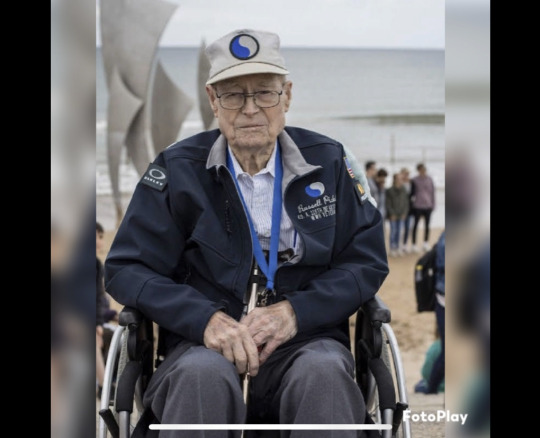
0 notes
Photo

On May 5th 1915, the wonderful actress and singer (and one of my favorite otr moms), Alice Faye, was born. She was quoted by The New York Times as "one of the few movie stars to walk away from stardom at the peak of her career." But their loss was our gain, as she is better remembered for being the radio comedy partner of her husband, bandleader and comedian Phil Harris, who she married in 1941. Hollywood gossip columnists gave the marriage six months, but it lasted 54 years, until he passed away at the age of 91 in 1995. You can listen to the comedy duo in the Phil Harris / Alice Faye show on RUSC.com
0 notes
Photo
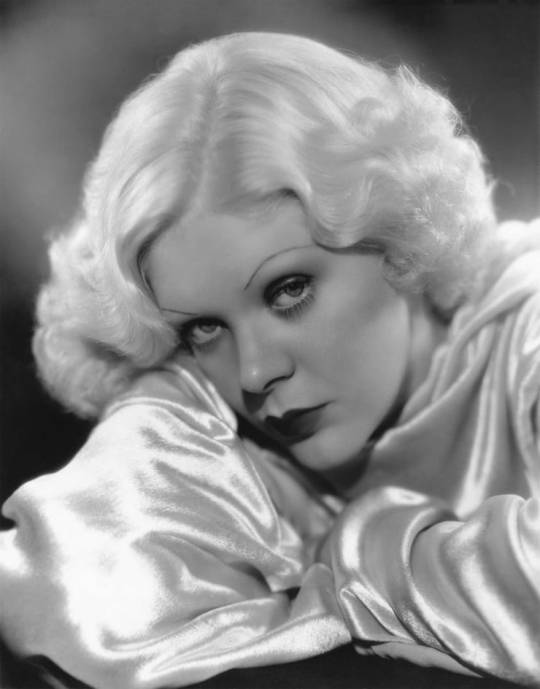

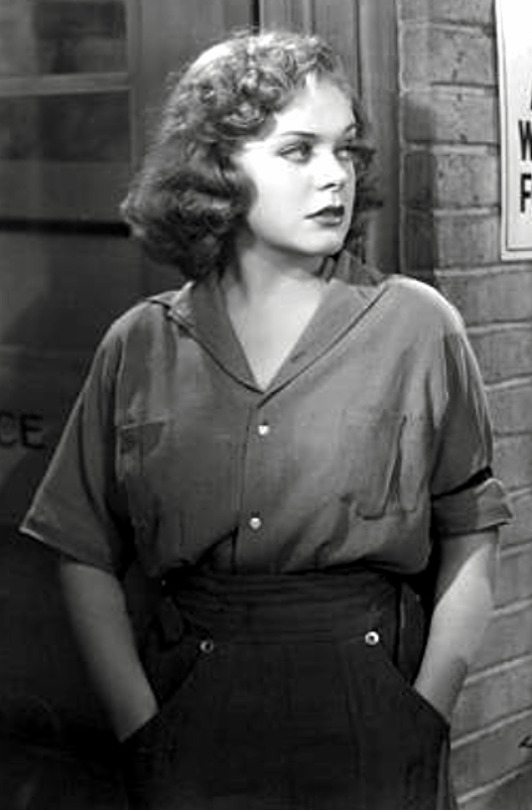
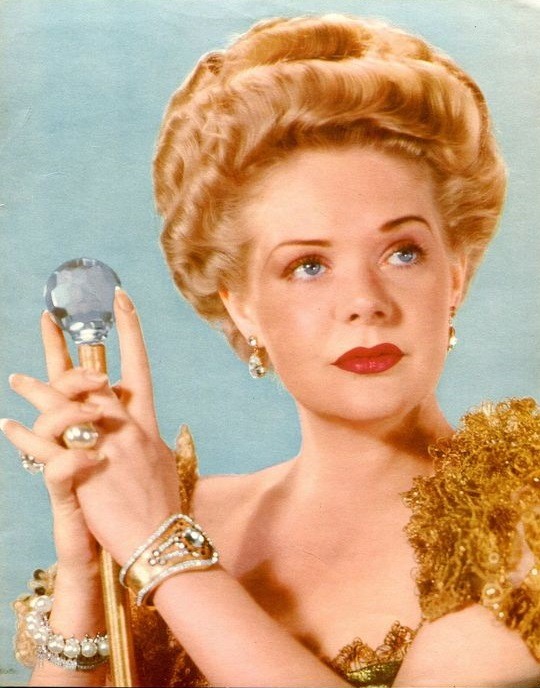

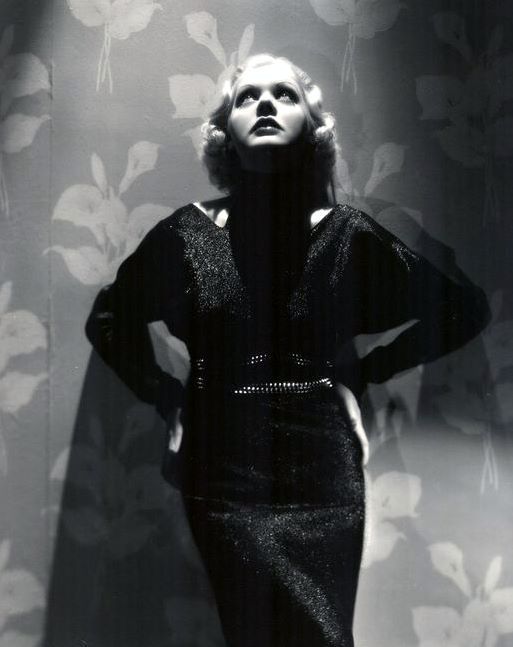

Happy Birthday To Gorgeous Forgotten American Singer/Actress Alice Faye
(Born 5th May 1915)
Pics Sources: Listal.com - Bing Images - Famousfix.com
#alice faye#birthday girl#born 5th may 1915#gorgeous forgotten american singer/actress#alice rose from the mean streets of new york's hell kitchen to become the most famous singing actress in the world#trade marks: blue-eyed blonde - sexy contralto voice - often played gritty no-nonsense ladies#appeared in 6 films with carmen miranda#appeared in 2 george white scandals (1934 & 35)#best remembered for her roles in sing baby sing - king of burlesque (both 1936) - tail spin (1939) - lillian russell (1940)#also remembered for sally irene and mary (1938) - tin pan alley (1940) - weekend in havana (1941) - state fair (19620#only 37 ating credits#years active 1934-45 & 1962 & 1976-1980#singing in films from 1934-78#old hollywood musicals#old hollywood#pics sources: listal.com - bing images - famousfix.com
29 notes
·
View notes
Video
youtube
On November 21st 1917 war poet, Lt E A “Tosh” Mackintosh, Seaforth Highlanders was killed on the second day of the Battle of Cambrai.

Another anniversary that brings me to say don’t you dare say he wasn’t Scottish……Ewart Alan Mackintosh was the son of Alexander Mackintosh was born in Brighton, his roots were from Alness in Ross and Cromarty. He studied locally at Brighton College whilst also studying Gaelic and learning to play the pipes during the holidays, going on to St Paul’s school in London before completing his education at Oxford.
Fishing trips with his father to the Alness area and Highland holidays with two university friends nurtured his sense of Scottishness.
When war broke out and his Oxford contemporaries were accepted into the army, Mackintosh was rejected because of poor eyesight. He joined the university Officer Training Corps, and was eventually accepted by the 5th Seaforth Highlanders at the end of 1914. He served in France from July 1915, appointed battalion bombing officer (hand grenade expert). In March 1916 the 51st Division took over a sector north of Arras previously held by the French, where the opposing trenches were close together.
In May Mackintosh led a successful raid on a German trench, during which three of his men had arms or legs blown off; despite his struggles to carry them back in, they all died. The action brought him the Military Cross, though he wrote that he would ‘rather have the boys’ lives’. It also inspired his best-known poem, ‘In Memoriam’, which shows the depth of the love for his men and the sense of responsibility which was to urge him to return to the Front. He was himself wounded and gassed at High Wood in August 1916, and sent home for a time.
Once recovered, he spent eight months at Cambridge training cadets, and while there became engaged to a VAD nurse. Nevertheless his determination to return to active service was strong, and he joined the 4th Seaforths near Bapaume at the beginning of October 1917. Mackintosh was killed in the fighting around Cambrai on 21st November.

These lines from Mackintosh’s poem ‘A Creed’ are engraved on the Scottish American War Memorial in Princes Street Gardens in Edinburgh:
If it be life that waits I shall live for ever unconquered,
If death I shall die at last strong in my pride and free.
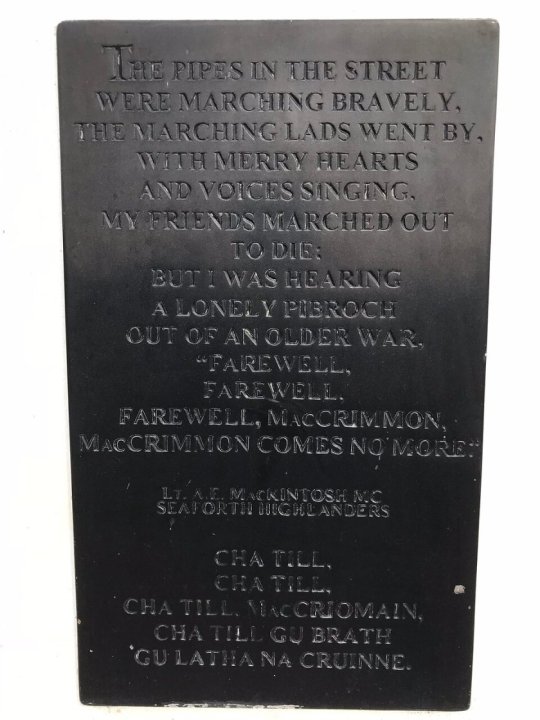
E. Alan Mackintosh’s most famous, or most remembered work is a very touching verse called Departure of the 4th Camerons, also known as Cha Till Maccruimein.
The pipes in the streets were playing bravely,
The marching lads went by
With merry hearts and voices singing
My friends marched out to die;
But I was hearing a lonely pibroch
Out of an older war,
Farewell, farewell, farewell, MacCrimmon,
MacCrimmon comes no more.’
And every lad in his heart was dreaming
Of honour and wealth to come,
And honour and noble pride were calling
To the tune of the pipes and drum;
But I was hearing a woman singing
On dark Dunvegan shore,
In battle or peace, with wealth or honour,
MacCrimmon comes no more.’
And there in front of the men were marching
With feet that made no mark,
The grey old ghosts of the ancient fighters
Come back again from the dark;
And in front of them all MacCrimmon piping
A weary tune and sore,
On gathering day, for ever and ever,
MacCrimmon comes no more.
‘Ewart Alan Mackintosh (1893-1917)
26 notes
·
View notes
Text
The Irish Lion: The legend of Paddy Mayne and the SAS
The first crop of Special Air Service (SAS) soldiers were a motley crew of bar-room brawlers, public school hell-raisers, eccentrics and misfits but they all embodied the tenets of courage, honour and ingenuity.
Hatched in the desert and borne out of the necessity of World War Two, the SAS or known as ‘the regiment’ was started by the 6’5” ‘Phantom Major’ David Stirling nicknamed him The Giant Sloth for his chronic laziness and fondness for slipping out of camp for nights of carousing. He hated marching, military discipline and disdained authority. By all accounts a terrible soldier but he was brave and cunning.
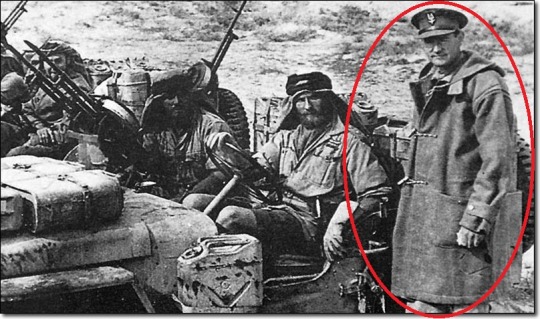
The principle behind the SAS was simple: To use small bands of irregular elite soldiers who could operate by stealth behind enemy lines, destroying aircraft, supplies and hopefully also enemy morale as a by-product of causing vast mayhem. One perception of the unit at this stage is as a motley band of scruffy and rebellious commandoes striking out of the darkness at the Nazis. The latter part of that is true, the former needs qualifying – all the men were disciplined operators drawn from commando units. They sometimes grew out unkempt beards because they were in the desert and away from camp for long stretches. It, of course, helps glamourise things more that Stirling himself was captured and eventually transferred to the infamous Colditz Castle after multiple escape attempts.
In his absence, responsibility for the SAS passed to his second in command, the larger-than-life Irishman Robert Blair ‘Paddy’ Mayne.
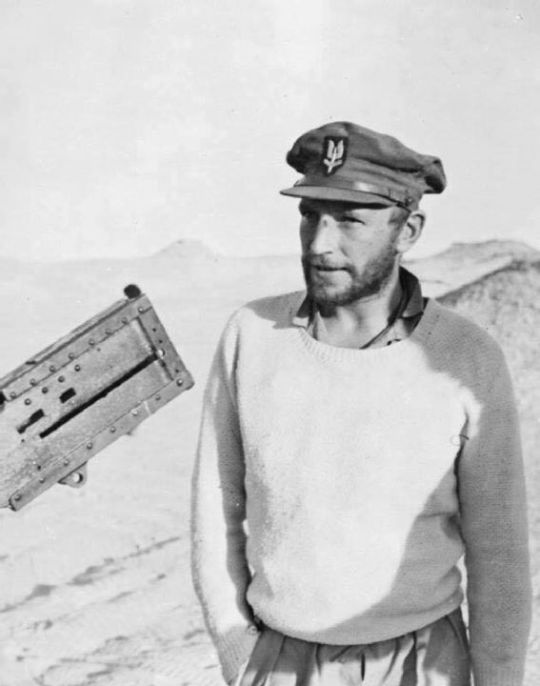
Known to be a terrific soldier with tremendous battlefield intuition, Mayne was allegedly recommended to Stirling by his friend Eoin McGonigal. He was brave, unconventional and a force to be reckoned with – the perfect man for the nascent SAS. There was just one problem: He was languishing in prison for striking his superior officer Geoffrey Keyes (or perhaps it was for threatening him with a bayonet?). Curiosity sparked, Stirling went to meet Mayne in his jail cell.
An account of their initial meeting appears in Alan Hoe’s biography of the SAS founder. At first, Mayne was reluctant to join Stirling’s unit, known at that point as ‘L Detachment’:
“’I can’t see any prospects of real fighting in this scheme of yours’. There was undisguised scepticism on his face.
“’There isn’t any. Except against the enemy’. It was the right reply because Mayne began to laugh.
“’All right. If you can get me out of here I’ll come along’. He extended his huge hand.
“’There’s one more thing’, Stirling said, ignoring the hand. ‘This is one commanding officer you never hit and I want your promise on that’. He reached out for the hand.
It wasn’t just the partnership that became legendary. On the heels of his stunning military successes, a number of stories about Mayne sprang up that added to the legend.

The son of William Mayne and Margaret Boyle Vance. Robert Blair "Paddy" Mayne was born on 11th January 1915. He was born into a wealthy Presbyterian family and the sixth of seven children, four boys and three girls. He grew up on the 41-acre grounds of the Mount Pleasant estate overlooking the town of Newtownards, County Down in Northern Ireland. Educated at Regent House School, he played cricket, rugby and golf, excelling in each while also demonstrating an aptitude as a marksman in the rifle club.
While at Queen’s in Belfast studying law to eventually qualify as a solicitor (lawyer), he took up boxing and within a matter of months won the Irish Universities Heavyweight title in August 1936. He made his Ireland rugby debut against Wales at Ravenhill in 1937 and the last of six appearances two years later, coincidentally against the same opposition in Belfast. His talent was recognised in selection for 1938 Lions tour to South Africa, where he made quite an impression on and off the pitch. Mayne could tolerate any physical challenge but was unable to cope with boredom and when of a mind to do something expected full compliance from acolytes, willing or reluctant. Breaking hotel furniture during drunken stupors were not uncommon.
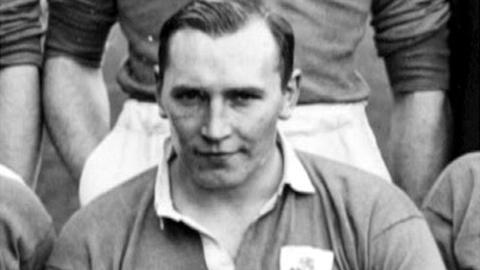
His drunken off-pitch exploits couldn’t camouflage his innate ability as a gifted rugby player. Mayne lined out in 17 of the 20 provincial games and all three tests against the Springboks; having lost the first two he was singularly influential in securing a victory for the Lions in the third test.

The late Sean Diffley, rugby correspondent and author, wrote of the talented rugby second-row: “Mayne was a Viking, a throwback to the ancient days of towering warriors, gentle and charming when in repose, but fierce and dangerous when aroused, and a ‘hyphenated’ nuisance when he had a couple of jars. His fierce dark physical outbursts may well have been the stuff of legend, but they were not always fun to those immediately concerned, and they were a great cause of worry to his friends. There was the case of the Irish player for instance, who in 1939, was thrown out of the window of the Swansea hotel by Mayne during the post-match celebrations. Witnesses were thankful that it was a ground floor window and that the player came to no harm, but it was not simply high jinx either that caused the incident, but the result of Mayne brooding darkly on something that is now long forgotten.”
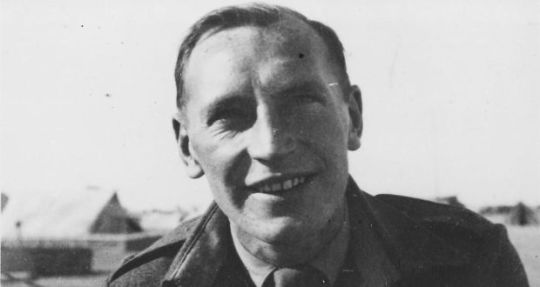
At the outbreak of the Second World War, Mayne received a commission in the 5th Anti-Aircraft Battery, in April 1940 joined the Royal Ulster Rifles and following Dunkirk volunteered for the 11 (Scottish) Commando.
He was mentioned in dispatches for the impressive manner in which he commanded his troop in the Litani River Raid in Lebanon and recruited by David Stirling for his newly formed SAS unit.
There are tales of Mayne shooting the floor around the feet of a bar owner who overcharged and was rude to him, and the 2004 documentary ‘SAS Warrior: The Life of Paddy Mayne’ reports that an intoxicated Mayne once unloaded his pistol into a drinking companion.
The murder is said to have been covered up.
But many of these stories are untrue, or at the very least they require contextual explanation.
Take for instance the story that Mayne was in prison and awaiting a court-martial for striking his commanding officer, Geoffrey Keyes, later posthumously awarded a Victoria Cross, but whom the Irishman considered an upper-class twit. That Mayne had no time for the privileged caste is part of Mayne’s myth making.
Many historians now dispute the veracity of the story. There is no record of Mayne’s arrest and David Stirling, as author Gavin Mortimer and other writers of the SAS Regiment have written, was prone to exaggerate to mischievously feed the legend.
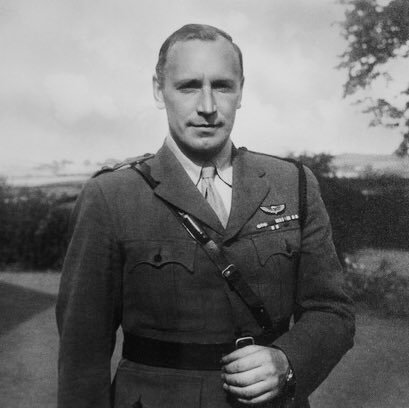
Indeed the story that Mayne was imprisoned for striking his superior officer, Geoffrey Keyes because he wasn’t selected for a raid to kidnap or kill Erwin Rommel makes no sense. The SAS were drawn from Nos 7, 8 and 11 Commandos, operating around the Mediterranean in 1941. (Commando were units containing around 500 well-trained troops). Keyes and Mayne were both in 11 Commando, which was decimated in a mission in Syria earlier that year. By the time it was reconstituted and the Rommel Raid conceived, Mayne had already left the unit. In any case, it’s just as well Mayne did not participate – the mission failed (because Rommel wasn’t there) and Keyes, along with many others, didn’t make it back.
Instead, Mayne, would meet Stirling in North Africa months before, and not in a prison cell either.
It was he who, in fact, recommended his friend Eoin McGonigal to Stirling, not the other way around.
Stirling was not looking for a modern-day incarnation of a Viking berserker.
On the contrary, the founding philosophy of the SAS (then known as L-Detachment) indicates a need for extreme heroism but also extreme professionalism: “An undisciplined TOUGH is no good, however tough he may be. Most of ‘L’ Detachment’s work is night work and all of it demands courage, fitness and determination of the highest degree and also, and just as important, discipline, skill and intelligence and training.”
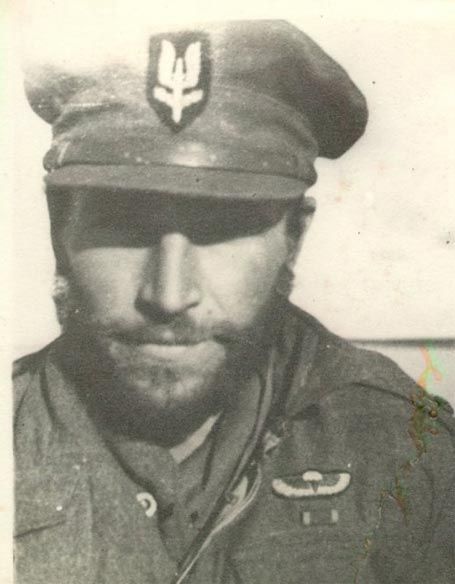
The odd thing is that life in the SAS during World War 2 was perfectly exciting enough. There simply wasn’t any need to make up tall tales. Mayne himself said as much in a letter: “(T)here is no use writing this stuff, people think you are shooting a line – the most fantastic things happen every time we go out.”
A perfect example of this occurred around the time Mayne wrote this. He and Stirling had decided to drive a truck with five comrades right up to an enemy encampment in the desert.
They had a German speaker with them and used him to bluff their way in. When the man was asked for the password, Mayne, who didn’t speak much German, related later what he understood the general direction of the conversation to have been:
“How the – do we know what the – password is, and don’t ask for our – identity cards either. They’re lost and we’ve been fighting for the past seventy hours against these – Tommies. Our car was destroyed and we were lucky to capture this British truck and get back at all. Some fool put us on the wrong road. We’ve been driving for the past two hours and then you so and sos, sitting here on your arses in Benghazi, in a nice safe job, stop us. So hurry up, get that – gate open.”
It wouldn’t be a nice safe job much longer. Mayne, who had a pistol resting on his lap, waited as one of the guards stepped closer to inspect them. Luckily the bluff worked because Mayne realised at the last minute he’d forgotten to cock it.
Once the gate was open, they proceeded to blast the hell out of the trucks and tents that they found within the camp, before also blowing up their own truck (by mistake) and hot-footing it out of there.
By this point, of course, they’d found their stride, but it had been a difficult learning curve. L-Detachment’s first mission called for dropping 60 men by parachute behind enemy lines. But wind conditions were awful and they were scattered hopelessly wide, isolated in the desert and miles from their targets. Most were either killed or captured (one of the dead was Mayne’s friend Eoin McGonigal). Fortunately, there was a solution right under David Stirling’s nose.

The Long Range Desert Group were themselves a kind of special operations unit conducting reconnaissance and the occasional raid of their own. A portion of their men and vehicles were next allocated to assist L-Detachment, and from that point forward Stirling’s force would be conveyed to their targets by their comrades in the LRDG. Gavin Mortimer’s book ‘Stirling’s Desert Triumph: The SAS Egyptian Airfield Raids 1942’ features an exchange between Mayne and one of his subordinates during a mission rehearsal in one of the 30cwt Chevrolet trucks they’d be using:
“’What direction are we driving in?’ (Mayne) suddenly said, turning to the front gunner.
“The man stared at the stars, trying to figure out which star was which. At length he replied:
“’North-east, I should say, sir’.
“’Ha!’ exclaimed Mayne. ‘You wouldn’t get far if you had to walk back.’
“Changing gear, Mayne cast a sideways glance at his gunner and said quietly: ‘Mind you’re certain of your direction by tomorrow night’.”
At first, Stirling’s men were dropped off some distance from their targets and then approached on foot. The favoured method for destroying German planes in airfields – the main objective – was to attach and then detonate Lewes bombs. These had been created by one of their comrades, Lieutenant Jock Lewes.
But then a new method of operation was stumbled upon. During a raid on Bagoush airfield, in the Quattara Depression, Mayne had put bombs on 40 aircraft but only 22 of them went off. After examining some charges left over, he found that the primers had been inserted into their plastic sleeves too early – they’d been in there too long and had become damp.
From this problem came a series of solutions: They should just drive the LRDG vehicles right up to the target from now on to save time; they should, therefore, make sure the vehicles had machine guns mounted for protection; in fact, why not just drive the vehicles into the airfields and use the machine guns to destroy the planes instead?
This all came together in the raid on Sidi Haneish airfield on July 26/27, 1942. Two columns of nine jeeps each burst out of the night and whipped around the rows of Luftwaffe planes, riddling them with bullets before high tailing it back out into the darkness. 30 aircraft were left in ruins.
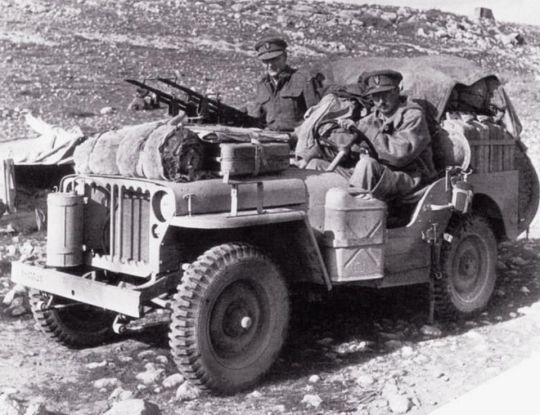
But the history of the SAS and Paddy Mayne wasn’t all spectacular desert raids.
Following the capture of Stirling and the migration of the war to Sicily and Italy, the nature of the fighting changed.
So too did Paddy.
L-Detachment had been re-designated as 1 SAS Regiment on September 28, 1942, and now Mayne, promoted to Major himself, was its standard bearer in Stirling’s absence. Contrary to his reputation as a stereotypical action hero, Ross says that Mayne’s side as solicitor now emerged as he came to be, in Ross’ view, probably a better administrator than Stirling. To be sure, an authoritarian side also emerged, but this too seems indicative of his care and commitment to professionalism, training and mission prep. He seems to have cared very deeply about men killed under this command and worked extraordinarily hard to prevent their deaths.
The SAS’ next incarnation as ‘the Special Raiding Squadron’ (SRS) was certainly very successful, as it worked its way over defensive positions in Sicily and then up the western side of the Italian peninsula. These actions are noteworthy for two things: Difficult objectives achieved and relatively low casualty rates, a testament to Mayne’s careful stewardship.
Augmented by the American landing in the east at Salerno on September 9, 1943, one of these actions took place at the Biferno river, behind which the Germans were making a stand. The SRS, along with Nos 3 and 40 Commandos were dispatched to Termoli to outflank them. No 3 Commando would establish a beachhead allowing No 40 Commando to capture the town and its harbour whilst the SRS continued on to take bridges. The subsequent fighting would be the stuff of Hollywood Second World War movies, featuring trucks set ablaze and Germans spilling out in alarm, along with encounters with hardened German paratroopers and skirmishes around farm buildings.
Despite the stiff and professional resistance, the Special Raiding Squadron lost only one killed, three wounded and 23 as MIAs. In return they inflicted casualties of 23 killed, 17 wounded and 39 captured, as well as taking ground north of the Biferno.

Next up was France. Here the SRS would be upgraded to 1 SAS proper, a battalion-sized force of about 1,000 men, as it served in the Special Air Service Brigade alongside 2 SAS (led by Bill Stirling, David’s brother) and two French parachute battalions and an independent Belgian parachute company (about 200 men). Just as Mediterranean operations had required the SAS to work under different circumstances and terrain, so too would a return to parachuting and work behind enemy lines in France test the unit. Gone (were the days) when teams of four men with water bottles and a handful of dates, lightly armed – a few grenades in their pouches and Lewes bombs in a haversack – set out to stalk an enemy airfield. They would need more equipment - not only more of what they’d had before, but more equipment than those used to logistical planning for the airborne troops seemed to realise.
Resupply by the RAF was thought about, as were jeeps – better for getting men around but harder to conceal. Men on foot might prove more stealthy in the new rubber-soled boots, but these left distinctive footprints that could be tracked and, in any case, problems had shown up in training (the uppers were known to separate from the soles). Training patterns also needed adjusting. Early on Mayne had fought to prevent the SAS from being turned back into a regular Commando unit.

Now he was fighting amalgamation with the PARAs. Maroon caps were issued and his men instructed to wear them instead of their sand-coloured berets– Mayne told his men to hid the SAS berets in their packs until they could don them later out of sight of officials. On a more practical level too the SAS was butting up against what, by that point, had become conventional methods of training paratroopers. The latter had to learn to land in large groups during the daytime in open country, ready and able to engage in battle immediately. SAS parachutists needed to land in small teams, quietly and at night.
Mayne himself was involved in some of the war’s latter action. Most memorably on 10th April 1945, the push towards Berlin was underway. Near the village of Borgerwald, an SAS unit was ambushed and their commanding officer killed. Mayne took over the Jeep, manning the guns and some say he single-handedly rescued every wounded man by lifting them one by one from a ditch and into his jeep before destroying the enemy gunners in a nearby farmhouse. For this daring feat, he was recommended for the Victoria Cross. The citation was signed off by Field Marshal Montgomery himself but the award would elude Colonel Paddy. He received a 3rd bar on his Distinguished Service Order (DSO) and his name would be remembered as the stuff of legends.
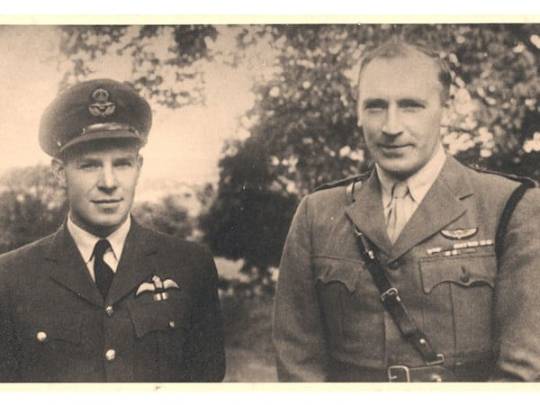
Paddy Mayne’s service with the SAS would end as it began, with his commander Major-General Bob Laycock – who had been the one to recommend him to David Stirling – writing to congratulate him on his DSO:
“My Dear Paddy,
“I feel that I must drop you a line just to tell you how very deeply I appreciate the great honour of being able to address, as my friend, an officer who has succeeded in accomplishing the practically unprecedented task of collecting no less than four DSOs. (I am informed that there is another such superman in the Royal Air Force). You deserve all the more, and in my opinion, the appropriate authorities do not really know their job. If they did they would have given you a VC as well. Please do not dream of answering this letter, which brings with it my sincerest admiration a deep sense of honour in having, at one time, been associated with you.
Yours ever, Bob Laycock.”
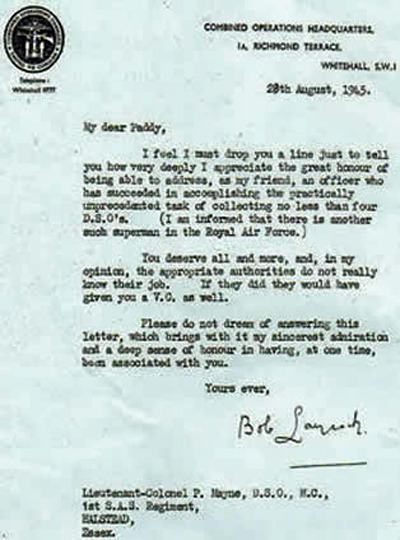
Looking back at his legacy, many have wondered why he didn’t get the Victoria Cross. George VI publicly expressed surprise that Mayne had not been awarded a Victoria Cross. Some say it was because hot-headed Mayne, who’d become Lieutenant Colonel by the end of the war, had punched the second in command in his battalion during one heated exchange. Others say it was down to a technicality - because the raid in question was multiple acts of bravery, not a single act. The official SAS historian Ben Macintyre suggests that Blair Mayne was denied the Victoria Cross either because of his brawling, his anti-Establishment streak or his alleged homosexuality (rumours rather than factually proven it must be stressed). Blair Mayne mistakenly thought Churchill had personally blocked him because of his history of brawling against military superiors and drunken behaviour that perhaps offended Churchill’s purist views of being an officer. The truth seems to be that Churchill was said to have been saddened and shocked by the omission.
In 2005, 50 years after Mayne’s death, an Early Day Motion in the House of Commons supported by 100 MPs, proposed that, “the Government mark these anniversaries by instructing the appropriate authorities to act without delay to reinstate the Victoria Cross given for exceptional personal courage and leadership of the highest order and to acknowledge that Mayne’s actions on that day saved the lives of many men and greatly helped the allied advance on Berlin.” It was defeated.
Perhaps there was no conspiracy though. Some historians of the SAS Regiment have laid out a common-sense case for precisely why one would expect Mayne not to have won the VC: Because doing so required independent witness testimonies of a recipient’s brave deeds from high-ranking officers. Special forces work, by its very nature, made reaching this bar highly unlikely. Heroism would have been commonplace, but, for the most part, it was clandestine and often independent of senior officers.

Mike Sadler, now close to 100 years old, is the last surviving member of the original SAS. His feats of bravery during the war read like a movie script. He was decorated with the French Légion d’honneur at 98 Years old in 2018 . Mike Sadler joined the Long Range Desert Group in 1941 and was based in the North African desert. Lieutenant David Stirling brought the SAS (Special Air Service) into service, and Mike Sadler was transferred to the new unit when they began launching raids in Libya. He became their top navigator as he had a unique talent for being able to navigate vast expanses of desert, without the aid of maps, to guide the raiding parties to their targets. He also served under Paddy Mayne from 1941 until the end of the war.
I have had the privilege to have met Mike on one or two occasions through both my older brother and father with whom they share a common friendship through military veteran circles (but belonging to different eras). Over a few lunches and dinners over the years, I was hooked on his anecdotes and was full admiration for his exploits.
Most memorably Mike recounted the time that while sitting in a restaurant in Paris surrounded by seven or eight soldiers Paddy Mayne took out a grenade, pulled the pin and placed it on the table. Several dived for cover but Sadler reckoned that Mayne wasn’t about to kill himself. He was right; Paddy had previously removed the detonator.
This atypical story added to the Olympian myth of Paddy Mayne. And yet the grenade incident in the busy café wasn’t the random act of recklessness it sounds like. There was method in the madness. Mayne was making an important point. Whilst responsible for French troops who were part of the Special Air Service Brigade in 1944, he’d been horrified by reports of improper handling of grenades. The French troops simply hadn’t been as familiar with infantry training as they should have been. So Mayne used the incident in the café to show it was possible to completely control a grenade if one knew what they were doing.
Sadler explained that like him all the men who served with Mayne had a huge respect and admiration, drawing from his comforting presence on missions. But for all that Paddy Mayne had no close friends, other than Eoin McGonigal, who helped persuade him to join the SAS and who was killed in the Benghazi raid, the very first SAS operation in 1941.

The sad truth is that Paddy Mayne cut a solitary figure, often to be found reading the darker poetry of AE Housman. Mayne was socially awkward with no idea how to talk to women even though they were attracted to this very big, athletic Irishman. He revered his mother and put women on a pedestal, refusing to tolerate swearing in their presence. He was shy until drink initially loosened his inhibitions but then transported him to far darker places. But for all that he wasn’t reckless with the lives of his men. He weighed up situations, was intuitively brilliant in terms of the guerrilla tactics he employed when orchestrating his night-time raids in customised jeeps deep behind enemy lines initially in Egypt and Libya.
Lieutenant-Colonel Robert Blair ‘Paddy’ Mayne was a fighting legend, and a pitiless killer in war. Even his comrades thought him cold-blooded and overly ruthless. Stirling thought Mayne had gone too far on occasions in killing the enemy. And yet Mayne typified the SAS recruitment policy, whose finds were the “sweepings of prisons and public schools”. In countless missions behind enemy lines, Major Paddy Mayne destroyed more aircraft than any fighter pilot on either side during the course of the war between Britain and Germany. He was to go on and become one of the most decorated British soldiers during the war.
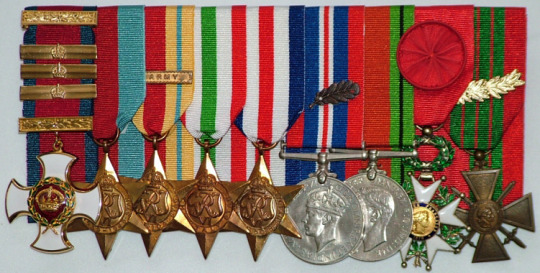

Ben Macintyre, author of ‘Rogue Heroes: an authorised history of the SAS’ wrote: “It is not a story of unalloyed British bulldog heroism. These people were tough as tungsten but they were also human and frail and huge mistakes were made.”
Such men of war are not made for peace time.
Mayne sought further adventure in an Antarctic expedition but had to return home prematurely with a debilitating back condition, the origins of which came from his war service.
He took up a position as secretary to the Law Society of Northern Ireland until, returning from a night’s socialising on December 14th, 1955, he clipped an unlit parked lorry, and crashed into a telegraph pole on the Scrabo road, a few hundred metres from his house. Paddy Mayne died at 40 years old. He is buried in Movilla Abbey graveyard.
Hundreds attended Mayne’s funeral. His life was and continues to be commemorated in books, film. A statue in his native Newtownards stands in his honour. The town’s western bypass is also named after him.
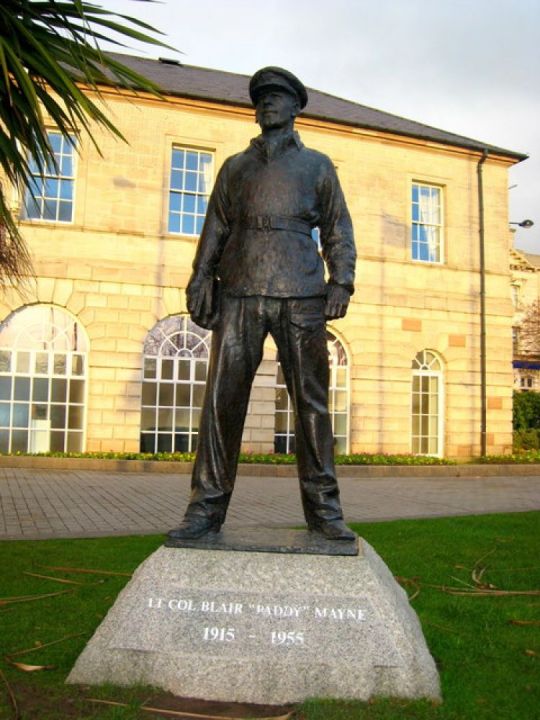
A remarkable and complex character, he crammed a great deal into a life largely spent in the service of others, some of whom would have regarded him as a hero, although he, himself, would not.
King George VI asked Paddy Mayne how it was that he had not received the Victoria Cross, and he answered in a manner that sums up this courageous and remarkable man:
“I served to my best my Lord, my King and my Queen, and none can take that honour away from me.”
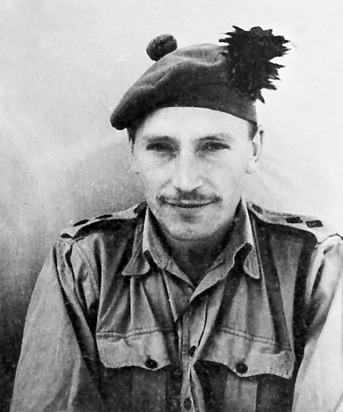
#paddy mayne#SAS#britain#military#special forces#army#world war two history#david stirling#mayne#special air service#history
410 notes
·
View notes
Text

Found a time line! I originally wrote a bunch of things out, but it was super unorganized. The website also lists out other interesting things if you’re willing to read it.
the website - https://thehauntedshanleyhotel.com/our-history/
1845 - Thomas Ritch built a new hotel called Ritch's Hotel, but later renames it as the Mansion House.
1851 - The hotel's name is changed to Hungerford's Hotel, after being bought by F. G. Hungerford.
1858 - In April, Hungerford sells the hotel to John Tonkin.
1866 - John Tonkin sells the hotel to A. J. Wood and it becomes the Topatcoke House.
1871 - In May, Wood sells the hotel to Aaron Schoonmaker and it becomes the Napanoch Hotel.
1872 - Schoonmaker sells to Eli Dewitt Terwiliger.
1876 - October 31st James Louis Shanley is born.
1877 - Terwiliger sells the hotel to Civil War veterans, William Easman and his two brothers, Charles & Peter.
1884 - The Easman brothers sell to Frederick B. Bridgens.
1887 - Adolf Wagner purchases the hotel.
1895 - March 18th the hotel burns down to its foundation, after a nearby house catches fire and spreads.
1895 - by September a new building frame is erected.
1895 - In November the hotel reopens for business as the Colonial Hotel.
1898 - Wagner sells to Mary Roos and they change the name of the hotel back to the Hotel Napanoch.
1900 - US Federal Census shows George Gosselin as the owner.
1902 - Allen H. Hazen is born.
1906 - James Louis Shanley purchases the Colonial Hotel for $10,000.
1907 - Charles Byrnes fell from a window, but survived.
1908 - A new addition is built for the hotel, including a bowling alley, barbershop, billiard room, and second floor apartments.
1910 - A barbershop opens with a barber named Peter Greger from Brooklyn NY.
1910 - April 26th James and Beatrice are married in the hotel.
1911 - July 18th Kathleen Shanley is born to James and Beatrice.
1911 - ON May 26th the barber's daughter, Jeanette Roseanne "Rosie" Greger, drowns in the well of the Hoornbeek Farm across the street from the hotel.
1912 - On January 6th, Kathleen Shanley dies at the age of 5 months and 24 days.
1913 - On September 10th James Shanley Jr. is born. By this time the hotel's name would soon be changed to Shanley's Hotel.
1914 - On January 21st James Shanley Jr. dies at the age of 4 months and 11 days old.
1915 - Dr. Walter Nelson Thayer, Jr. accidently ran over his 5 year old son, Walter Nelson Thayer III, after the boy climed onto the running board as the car was backing out of the alley between the hotel and the doctor's home. The boy sustained severe head injuries but did not die from the accident.
1916 - January 30th William Shanley is born to James and Beatrice.
1916 - In February there is a fire in the ice house and a new auto fire truck is credited with saving the hotel from destruction.
1916 - On November 9th, William Shanley dies at the age of 9 months and 10 days old.
1920s - The hotel operates as a speak-easy with bootleg liquor being hidden away in a secret basement room under the bar.
1932 - The hotel is raided for booze during the Prohibition Era.
1933 - James and Beatrice attends the Inaugural Ball at Washington DC
1933 - On August 3rd future first lady, Eleanor Roosevelt, is a guest at the hotel.
1937 - August 26th James Louis Shanley dies.
1941 - April 13th there is a fire at the hotel due to a faulty chimney.
1944 - Beatrice sells the hotel to Allen H. Hazen
1961 - November 27th Beatrice Shanley dies.
1967 - Nelson F. Waters purchases the hotel from Al.
1971 - August 26th Allen H. Hazen dies.
1973 - G. Edward Trumbull purchases the hotel.
1991 - The hotel closes down.
2005 - Salvatore Nicosia purchases the hotel and discovers it is home to several spirits.
2007 - The Shanley Hotel is reopened.
2016 - July 5th Salvatore Nicoscia passes away.
2017 - In December, the hotel was condemned and closed after a time of mixed reviews and poor management.
2018 - The hotel is reopened under new management
#Shanley hotel#anyway it's a hotel that's haunted#I wish I remembered what room we're staying in lol#I just watched Sam and Colby visit the hotel#I love paranormal shit
2 notes
·
View notes
Text
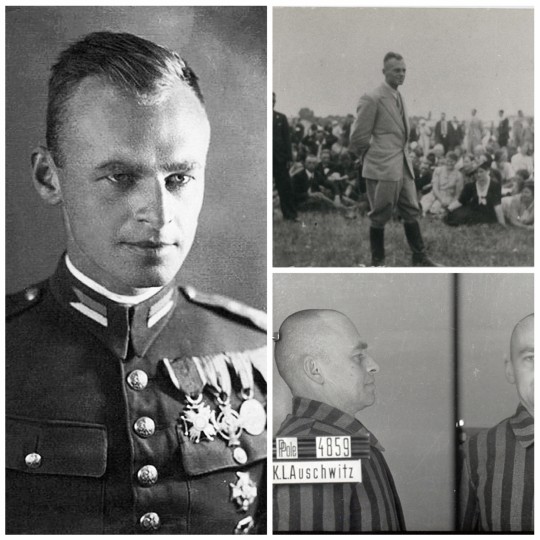
• Witlod Pilecki
Witold Pilecki was a Polish cavalry officer, intelligence agent, and resistance leader who volunteered to be embedded in Auschwitz, among other exploits. Pilecki was also a co-founder of the Secret Polish Army resistance group and later a member of the Home Army. Pilecki was a Catholic and a Polish patriot who viewed his struggle as a moral and patriotic duty.
Witold Pilecki was born on May 13th, 1901 in the town of Olonets, Karelia, in the Russian Empire. He was a descendant of an aristocratic family (szlachta) originally from the Grodno region. His grandfather, Józef Pilecki h. Leliwa, was a member of the Polish landed gentry and a dedicated Polish nationalist. Józef Pilecki had been a supporter of the secessionist January Uprising of 1863–1864. Following the brutal defeat of the uprising by Russian forces, Józef Pilecki, like most Polish nobles who supported the rebellion, had his title revoked and estate and other properties were confiscated by the Russian government. After his release he and his family were forcibly resettled by Tsarist authorities to the remote territory of Karelia. Witold's father, Julian Pilecki, worked for the Russian civil service and eventually settled in the town of Olonets in Karelia where he married Ludwika Pilecki. Witold Pilecki was the fourth of the couple's five children. In 1910, Ludwika and the children left Karelia and relocated to the Northwestern Krai. After being joined by their father, the family settled in Wilno (now: Vilnius, Lithuania), where Pilecki completed primary school and became a member of the secret ZHP Scouts organization. During the First World War, Wilno was occupied by the German Army in September 1915 and was incorporated into Ober Ost, the German military administration. Pilecki and his family fled to Mogilev, Byelorussia. In 1916, Pilecki moved to the Russian city of Oryol, where he attended gymnasium and founded a local chapter of the ZHP group.
In 1918, following the outbreak of the Russian Revolution and the defeat of the Central Powers in World War I, Pilecki returned to Wilno (now part of the newly independent Polish Second Republic) and joined a ZHP Scout section of the Lithuanian and Belarusian Self-Defense Militia, a paramilitary formation aligned with the White movement. The militia disarmed the retreating German troops and took up positions to defend the city from a looming attack by the Soviet Red Army. However, Wilno fell to Bolshevik forces on January 5th, 1919, and Pilecki and his unit resorted to partisan warfare behind Soviet lines. He and his comrades then retreated to Białystok where Pilecki enlisted as a szeregowy (private) in Poland's newly established volunteer army. He took part in the Polish-Soviet War of 1919–1921. He fought in the Kiev Offensive (1920) and as part of a cavalry unit defending the city of Grodno. On August 5th, 1920, Pilecki joined the 211th Uhlan Regiment and fought in the crucial Battle of Warsaw and in the Rudniki Forest. Following the conclusion of Polish-Soviet War in March 1921 Pilecki was transferred to the army reserves. He was promoted to the rank of plutonowy (corporal) and was designated as a non-commissioned officer. He went on to complete his secondary education (matura) later that same year. In 1922, Pilecki briefly attended the University of Poznań where he studied agriculture. He soon returned to Wilno and enrolled with the Faculty of Fine Arts at Stefan Batory University. Pilecki was forced to abandon his studies in 1924 due to both financial issues and the declining health of his father. He remained active in the military as a member of the army reserves and served as a military instructor in Nowe Święcice. Pilecki later underwent officer-training at the Cavalry Reserve Officers' Training School in Grudziądz. In September 1926, Pilecki became the owner of his family's ancestral estate, Sukurcze, in the Lida district of the Nowogródek Voivodeship. Pilecki rebuilt and modernized the property's manor house, which had been destroyed during World War I. On April 7th,1931, he married Maria Pilecka, a local school teacher originally from Kupa.
Pilecki developed a reputation as a community leader, a prominent social worker and amateur painter. He was also a vigorous advocate of rural development, founding an agricultural cooperative, heading the local fire brigade and also serving as chairman of a local milk-processing plant built in the district. In 1932, Pilecki established a cavalry training school in Lida. Shortly afterward he was appointed commander of the newly-established 1st Lidsky Squadron, a position he would hold until 1937, when this unit was absorbed into the Polish 19th Infantry Division. In 1938, Pilecki received the Silver Cross of Merit for his community activism. Pilecki was mobilized as a cavalry platoon commander in August 1939. He was assigned to the 19th Infantry Division under General Józef Kwaciszewski, part of the Polish Army Prusy, and his unit took part in heavy fighting against the advancing Germans during the invasion of Poland. The platoon was almost completely destroyed following a clash with the German forces on 10 September, and it withdrew to the southeast toward Lwów. It was incorporated into the 41st Infantry Division, in which Pilecki served as divisional second in command. He and his men destroyed seven German tanks, shot down one aircraft, and destroyed two more on the ground. After the fall of Warsaw on 27 September 1939, Pilecki and many of his men continued fighting as partisans. His division was disbanded on October 17th, with parts of it surrendering to the enemy.
Pilecki went into hiding in Warsaw with his commander Major Włodarkiewicz. On November 9th, 1939, the two men founded the Secret Polish Army (Tajna Armia Polska, TAP), one of the first underground organizations in Poland. Włodarkiewicz became its leader, while Pilecki became organizational commander of TAP as it expanded to cover Warsaw, Siedlce, Radom, Lublin, and other major cities in central Poland. While Pilecki wanted to avert a religious mission so as not to alienate potential allies, Włodarkiewicz blamed Poland's defeat on its failure to create a Catholic nation; he wanted to remake the country by appealing to right-wing groups. In the spring of 1940, Pilecki saw that Włodarkiewicz was "flirting with anti-Semitic views". To stop him, Pilecki went to Colonel Stefan Rowecki, the chief of TAP's rival resistance group, the Union of Armed Struggle (ZWZ), which called for equal rights for Jews and was focused on intelligence gathering of German atrocities and delivering it by courier missions to the Western Allies in an attempt to gain their involvement. The ZWZ had alerted the Polish Government in exile that the Germans were inciting Polish racial hatred as a diversion from their own crimes, and that a Polish Quisling could emerge as a result. In August, Włodarkiewicz announced at a TAP meeting that after all they would join the mainstream underground with Rowecki and that Pilecki had been nominated to go to Auschwitz. Włodarkiewicz said it was not an order but an invitation to volunteer, but Pilecki saw it as a punishment for refusing to back his ideology but nevertheless took up the challenge.
In 1940, Pilecki presented a plan to his superiors to enter Germany's Auschwitz concentration camp at Oświęcim to gather intelligence on the camp from the inside and organize inmate resistance. Little was known about how the Germans ran the camp, and it was thought to be an internment camp or large prison rather than a death camp. His superiors approved the plan and provided him with a false identity card. He went out during a Warsaw street roundup on September 19th, 1940 and was caught by the Germans along with 2,000 civilians. He was detained for two days in the Light Horse Guards Barracks, where prisoners suffered beatings with rubber truncheons, then sent to Auschwitz where he was assigned inmate number 4859. Pilecki organized the underground Union of Military Organizations (ZOW) at Auschwitz while working in various kommandos and surviving pneumonia. Many smaller underground organizations at Auschwitz eventually merged with ZOW. ZOW's tasks were to improve inmate morale, provide news from outside, distribute extra food and clothing to members, set up intelligence networks, and train detachments to take over the camp in the event of a relief attack by the Home Army, arms airdrops, or an airborne landing by the Polish 1st Independent Parachute Brigade based in Britain. ZOW provided the Polish underground with invaluable information about the camp; they sent reports to Warsaw from October 1940, and the reports were forwarded via the Polish resistance to the British government in London beginning in March 1941. In 1942, Pilecki's resistance movement was also broadcasting details on the number of arrivals and deaths in the camp and the inmates' conditions using a radio transmitter that was built by camp inmates. The secret radio station was built over seven months using smuggled parts. The radio was dismantled by Pilecki's men after concerns that the Germans might discover its location because of "one of our fellows' big mouth". These reports were a principal source of intelligence on Auschwitz for the Western Allies. Pilecki hoped that either the Allies would drop arms or troops into the camp, or that the Home Army would organize an assault on it from outside.
Meanwhile, the Camp Gestapo under SS-Untersturmfuhrer Maximilian Grabner redoubled its efforts to ferret out ZOW members, killing many of them. Pilecki decided to break out of the camp with the hope of convincing Home Army leaders personally that a rescue attempt was a valid option. Pilecki was assigned to a night shift at a camp bakery outside the fence, and he and two comrades overpowered a guard, cut the phone line, and escaped on the night of April 27th, 1943, taking with them documents stolen from the Germans. The men fled on foot to the village of Alwernia where they were helped by a priest, and then on to Tyniec where locals assisted them. After that, they reached the Polish resistance safe house near Bochnia. At one point during the journey, German soldiers attempted to stop Pilecki, firing at him as he fled; several bullets passed through his clothing, while one struck him without hitting either bones or vital organs. After several days as a fugitive, Pilecki made contact with units of the Home Army. On August 25th, 1943, Pilecki reached Warsaw and was attached to Section II (intelligence and counter-intelligence) of the Home Army's regional headquarters. After losing several operatives reconnoitering the vicinity of Auschwitz, it was decided that the Home Army lacked sufficient strength to liberate the camp without Allied help. Pilecki's detailed report estimated that "By March 1943 the number of people gassed on arrival reached 1.5 million", which was remarkably accurate considering post-war estimates suggest 1.1 million people died in Auschwitz during the war. On November 11th, 1943, Pilecki was promoted to Rotmistrz (cavalry captain) and joined a secret anti-communist organization, NIE (both the Polish word for "no" and short for niepodległość "independence"), formed as a clandestine unit within the Home Army with the goal of preparing resistance against a possible Soviet occupation. The Soviet Red Army, despite being within attacking distance of the camp, showed no interest in a joint effort with the Home Army and the ZOW to free it. Until he became involved in the Warsaw Uprising, Pilecki remained in charge of coordinating ZOW and AK activities and provided what limited support he was able to offer to ZOW.
When the Warsaw Uprising broke out on August 1st, 1944, Pilecki volunteered for service with Kedyw's Chrobry II Battalion. At first, Pilecki served as a common soldier in the northern city center, without revealing his actual rank to his superiors. Later, after many officers were killed in the fierce fighting that occurred during the early days of the uprising, Pilecki disclosed his true identity to his superiors and accepted command of the 1st "Warszawianka" Company located in Śródmieście in downtown Warsaw. After the capitulation of the uprising, Pilecki hid a cache of weapons in a private apartment and surrendered to the Wehrmacht on October 5th, 1944. He was sent to Germany and imprisoned at Stalag VIII-B, a prisoner-of-war camp near Lamsdorf, Silesia. He was later transferred to Oflag VII-A in Murnau, Bavaria where he was eventually liberated by troops of the US 12th Armored Division on April 28th, 1945. In July 1945, Pilecki left Murnau and was reassigned to the military intelligence division of the Polish II Corps under General Władysław Anders in Ancona, Italy. While stationed there, Pilecki began writing a monograph on his experiences at Auschwitz.
In October 1945, as relations between the Polish government-in-exile and the Soviet-backed regime of Boleslaw Bierut deteriorated, Pilecki was ordered by General Anders and his intelligence chief, Lt. Colonel Stanislaw Kijak, to return to Poland and report on the prevailing military and political situation under Soviet-occupation. Pilecki arrived in Warsaw in December 1945 and proceeded to begin organizing an intelligence gathering network, which included several wartime associates from Auschwitz and the Secret Polish Army (TAP). To maintain his cover identity, Pilecki lived under various assumed names and changed jobs frequently. He would work as a jewelry salesman, a bottle label painter and as night manager of a construction warehouse. Nevertheless, Pilecki was informed in July 1946 that his actual identity had been uncovered by the MBP. He was ordered to leave the country, but he refused to do so. Pilecki was arrested by agents of the Ministry of Public Security in May 1947, and he was repeatedly tortured before going to trial. A fellow accused saw him with two collarbones broken and his hands hanging limply by his sides. A show trial took place on March 3rd, 1948, and testimony against Pilecki was presented by future Polish prime minister Józef Cyrankiewicz, himself an Auschwitz survivor. Pilecki was charged with illegal border crossing, use of forged documents, not enlisting with the military, carrying illegal arms, espionage for General Władysław Anders, espionage for "foreign imperialism" (government-in-exile), and planning to assassinate several officials of the Ministry of Public Security of Poland. Pilecki denied the assassination charges, as well as espionage, although he admitted to passing information to the 2nd Polish Corps, of which he considered himself an officer and thus claimed that he was not breaking any laws. He was sentenced to death on May 15th, with three of his comrades, and he was executed with a shot to the back of the head at the Mokotów Prison in Warsaw on May 25th, 1948. Pilecki was 47 when died. Pilecki's place of burial has never been found but is thought to be somewhere within Warsaw's Powązki Cemetery. In 2012, Powązki Cemetery was partially excavated in an effort to find his remains.
#second world war#world war 2#polish history#military history#holocaust remembrance#holocaust#ww2#wwii#poland#soviet history#polish resistance#unsung heroes#biography
40 notes
·
View notes
Text
Robert Smalls…Sea Captain, slave, politician and hero.
Many people have wondered why there hasn’t been a movie made based on the life of Beaufort’s Roberts Smalls. We’re among them. His life is an amazing story. A story that needs telling. Yet, surprisingly enough, it’s a story that isn’t yet widely known, and that’s quite mind-boggling.
Just take a look at this story….
Smalls was born in Beaufort on April 5th, 1839 to a house slave named Lydia. Lydia was a house servant for plantation owner John K. McKee in a home on Prince Street in Beaufort. he had already taught himself to read and write with help of a Miss Cooley, a school teacher
At the age of 17 Robert married Hannah Jones, 33, a slave hotel maid. They had three children. As a free agent on “Slave’s time”, Smalls worked in Charleston as a waiter at the Planter Hotel, lamplighter for the city, stevedore and, in time, as a laborer on a commercial ship docked in the city.
Working on a ship, Smalls learned a great deal about sail-making and sailing the tides of Charleston harbor. Smalls’ keen navigational skills earned him a job as the pilot of the Confederate gunboat The Planter in March 1861. He was known as an expert pilot, and had studied the maps and sea charts of South Carolina and Georgia. robert smalls
Meanwhile, the fellow slaves aboard The Planter planned their escape to freedom. They chose the able seaman Robert Smalls as their leader.
On May 13, 1862, with his wife, children and twelve other slaves on board, Smalls took the Planter from the dock in front of the Confederate commander’s office and headquarters. After successfully passing Fort Sumter, the Planter approached Onward, the nearest Union blockading vessel, which was preparing to fire on it. After a white flag was raised, the Planter was allowed to come alongside. Smalls surrendered the ship, and gained everyone’s freedom.
Smalls bravery became a national sensation as media coverage praised him for delivering into Union hands “the first trophy from Fort Sumter.” Equally valuable to the Union was the information on mine placement, rebel troop dispositions, and a code book of Confederate flag signals which Smalls provided to Admiral Du Pont, commander of the South Atlantic Blockading Squadron. Retained as pilot of Planter due to his intimate knowledge of local waters, Smalls served as pilot on other vessels, including Du Pont’s Flagship, Wabash.
On September 7th, 1862 Recognized as an articulate leader and spokesman for freedmen, Smalls, accompanied by his wife and infant son, was sent by abolitionists on a speaking tour of New York. He was presented at this time with a gold medal by the colored citizens of New York as a token of recognition for his heroism, love of liberty, and his patriotism.
robert smallsSmalls piloted the Planter and steamed the ship all the way to freedom.
On December 1st, 1863 when the Planter became caught under intense crossfire from two batteries and a ship. Smalls took command of the vessel in place of it’s Captain and brought it to safety. Smalls was then appointed captain in his place, becoming the first black captain of a vessel in the service of the United States.
In 1866 Robert returned to Beaufort, and, with his Congressional prize money, purchased the house in which he and his mother had been slaves. He took care of his former owner John McKee’s wife until she passed away. The house was entered on the National Register of Historic Places as a National Historic Landmark in 1975.
Smalls then began a life in politics. He served in the South Carolina State Senate; served in 44th, 45th, 47th, 48th and 49th U.S. Congresses and also served as U. S. Collector of Customs.
On February 23, 1915 Robert died at the ripe old age of 76 and was buried at Tabernacle Baptist Church after what was called the largest funeral ever held in the city of Beaufort.
Now, seriously. Why no movie?
PBS has told his story. Why not Hollywood? There’s a traveling exhibition named The Life and Times of of Congressman Robert Smalls. Why not Hollywood?
All it takes is for the right people to hear the story. A Hollywood screenwriter. A producer. Just that one person.
When you have to chance to tell someone Robert Smalls’s story, tell them. They may pass it on to someone else. And so on. It may, one day, fall on the ear of the right person and then the world will finally know the story of Robert Smalls. Sea Captain, hero, politician, and slave.
America could use a new hero. A real hero.
We have one right here in Beaufort.

2 notes
·
View notes